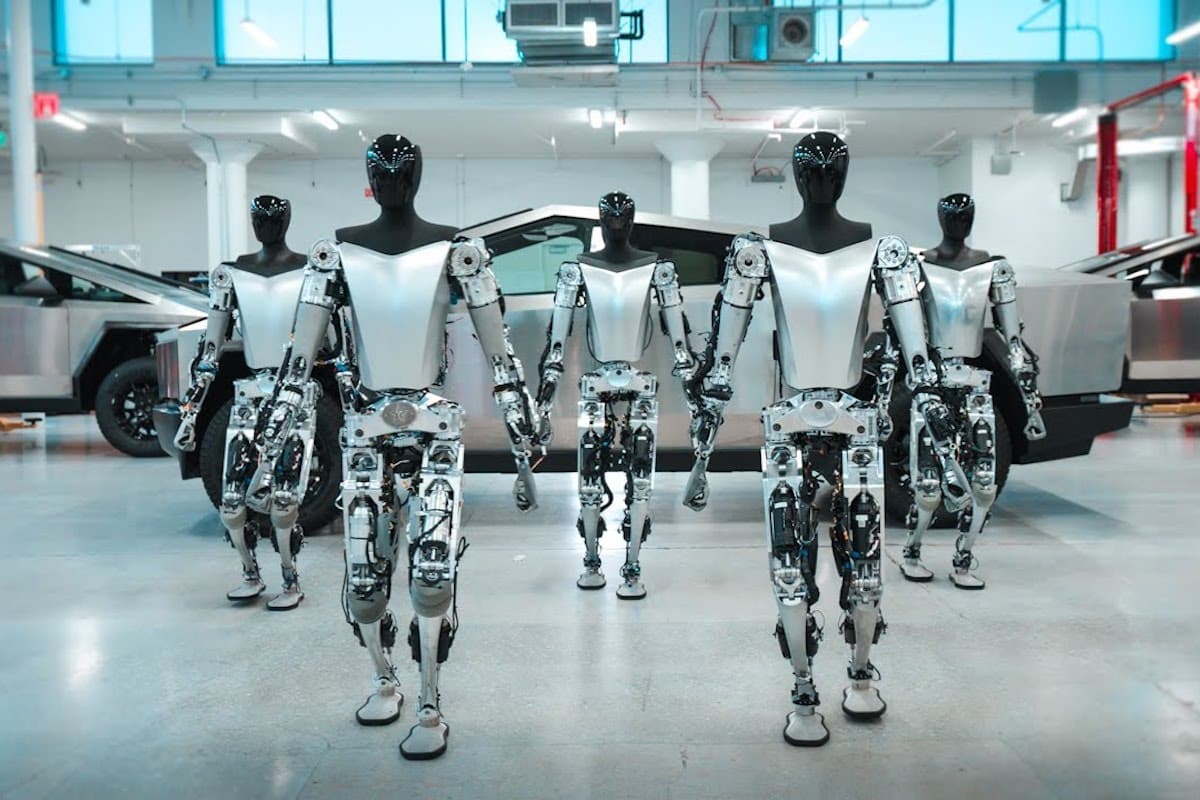Tesla saves money by laying off its employees for robots

The consulting firm Morgan Stanley has estimated the savings that Tesla could achieve by replacing its workers with its Optimus robots.
The information is real and absolutely not extracted from a dystopian novel. Welcome to a world where workers will soon disappear in the West…
According to a recent report by Morgan Stanley, Tesla could save up to $2.5 billion annually if it replaced 10% of its workforce with in-house developed Optimus humanoid robots. Behind this remarkable estimate lies a scenario of an automaker transformed into a robotics company.
First presented in 2021, Optimus is one of the most futuristic projects driven by Elon Musk. Unlike traditional robotic arms found in factories, Optimus is designed as a versatile humanoid robot, capable of mimicking certain human gestures in complex environments, such as an assembly line or a logistics operation.
Tesla has announced that it has begun testing Optimus on its own production lines in Fremont and Giga Texas. If Tesla’s robotics reaches the level of reliability and productivity promised, the impact on its business model could be colossal.
In its note, Morgan Stanley estimates the net present value of an Optimus robot at $200,000 (about 185,000 euros). Based on a workforce of 125,000 people at the end of 2024, the investment bank imagines a scenario where 10% of positions – approximately 12,500 employees – would be replaced by robots.
The result: potential annual savings of $2.5 billion in wages, overhead, and indirect costs. This figure does not come from nowhere: Tesla is currently under pressure on its margins due to a slowdown in sales, a price war in the electric segment, and fierce competition from China. If Optimus allows for restoring solid margins while reducing dependence on human labor, it could become the key tool for Tesla’s future.
A still very theoretical hypothesis
But this scenario raises many questions. First, on the technological front: Optimus is still in its infancy. Public demonstrations are still highly controlled, and its ability to actually replace a human worker in such a demanding environment as a Tesla factory remains to be proven.
Next, the regulatory and social framework will need to evolve. Replacing thousands of jobs with robots could provoke a political and union reaction. This paradigm shift will require careful management of social dialogue, starting with the most exposed production sites.
Finally, the massive adoption of humanoid robots implies maintenance, training, and supervision costs that could neutralize some of the expected gains.
Tesla does not pursue this type of innovation purely out of a taste for science fiction. Behind the rhetoric is a reality: the results for the second quarter of 2025 show a decline in deliveries (384,122 vehicles), a figure below Morgan Stanley’s expectations. At the same time, the energy storage activities (Tesla Energy) are struggling to take off, with 9.6 GWh installed, compared to 14 expected.
In this context, any promise of cost reduction is scrutinized closely. Especially since Elon Musk seems to want to spread his attention: the creation of an American political party raises concerns among investors about his ability to stay focused on Tesla’s industrial objectives.
Toward a manufacturer that sells robots rather than cars?
If the goal is indeed to transform Optimus into a commercial product, Tesla could eventually sell these robots to other companies in logistics, healthcare, security, or construction. Tesla’s business model would then shift towards a logic closer to that of an Apple or Amazon Web Services, with a fully integrated hardware and software product capable of generating very high margins.
This transition remains largely speculative, but Musk’s rhetoric over the past year leaves little doubt: Tesla no longer wants to be just an automaker. It wants to be a technology company, with robotics as its strategic core.
One question remains: in a world of unemployed people, who will buy Tesla’s products and services?
ALSO READ: Why is Tesla undermining the Model Y by slashing the Model 3?
This page is translated from the original post "Tesla sait ses économies en virant ses salariés pour des robots" in French.
We also suggestthese articles:
Also read





